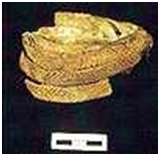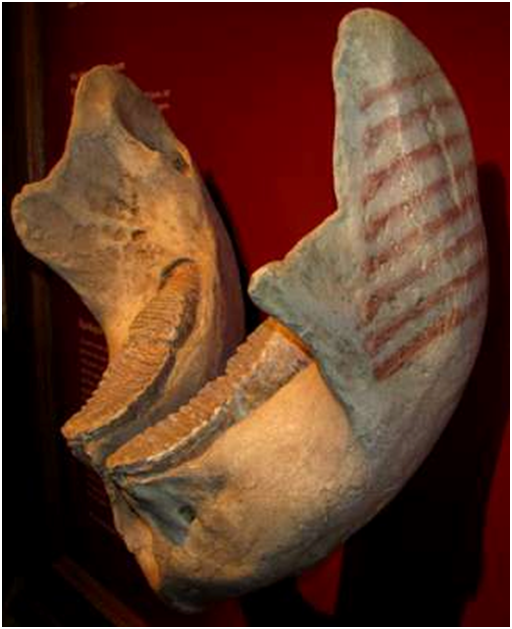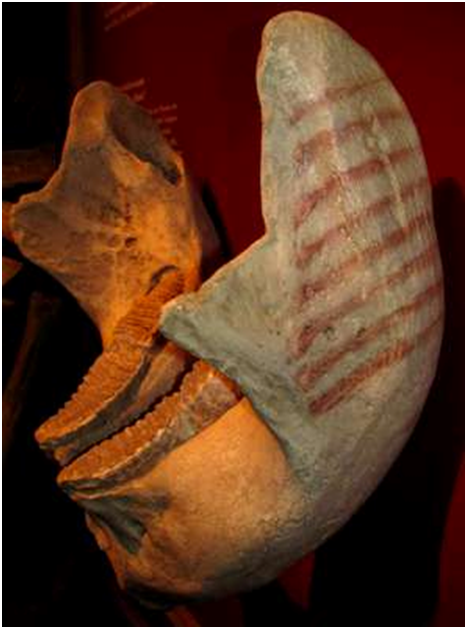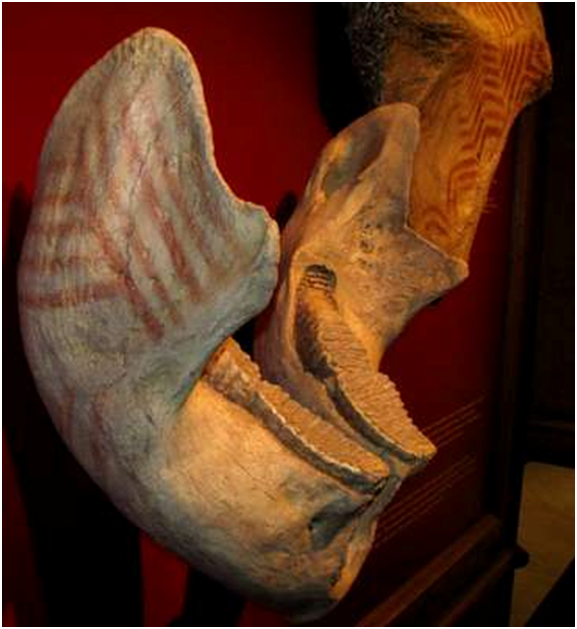MEZIN (АРТЭФАКТЫ)
(частка 2)
Bracelet gravé en ivoire de mammouth de Mézine. Collection IA NASU. Bracelet engraved out of mammoth ivory from Mezin. Collection IA NASU.

Photo and French text: "les mammouths - Dossiers Archéologie - n° 291 - Mars 2004" Photograph L Iakovleva. My thanks to Anya for access to this resource. These shoulder blades and jaws of mammoths have been decorated and may be musical instruments, played by striking.


Photo: Don Hitchcock 2008 Source: Facsimiles, Vienna Natural History Museum Text below from Lister, Bahn (2007) Northern peoples today, such as the Eskimo and Samoyed, always have a dance hut in their villages. This is the same size as a dwelling, but is set aside for song and dance, entertainment and ritual, and is used especially in the festivals of autumn and winter, at the start of the winter hunt. The site of Mezin in the Ukraine, dating to about 24 000 years ago, contains a mammoth bone hut which may have been devoted to a similar use. Although the interior space was probably too constricted by roof supports to allow for dancing, the floor appears to have been kept clear of domestic refuse - a sign that it was perhaps used for ritual purposes. A set of mammoth bones painted with red ochre and a reindeer antler hammer were found in a group on the floor of the hut. Originally they were thought to be art or cult objects. However, subsequent analysis revealed areas of surface damage on all of them, as well as signs of smoothing, thinning, polishing or rubbing. The conclusion must be that they formed a set with some common function that involved concentrated blows, as well as rubbing and polishing through prolonged contact with hands and perhaps fur clothing. The reindeer antler has the polish of long use on its handle, while its working surfaces are very worn and its spongy pores have reddish ochre in them, picked up from the decorated surfaces on the mammoth bones. A controversial interpretation of this evidence is that these bones were used as musical instruments, in a kind of ice age orchestra. The bones were presumably percussion instruments, struck with hammers. A mammoth shoulder blade, decorated with linear and zigzag stripes in red ochre, bears traces of polish on the neck, corresponding to the positions of the palm and thumb, suggesting that this was where it was held with the left hand, while the right hand struck the body of the instrument with a hammer. Other areas of wear possibly indicate that the bone was hit in different places to vary the tone of the note produced. A femur had had the soft, spongy material extracted from inside, perhaps to increase its resonance. It may have been played horizontally, like a xylophone, perhaps on a support rather than on the ground, judging from other polished areas. A half-pelvis and two jaw bones, likewise painted with red parallel stripes, appear to have been used in a similar way. The two jawbones were placed on their undecorated left sides, and the right sides - both painted with red stripes - were struck. The teeth were removed from one of them, perhaps to alter its resonance. A piece of bone from a skull, decorated with spots of red colour, was probably used as a drum: the cranium's cellular structure creates an unusual resonance, as experiments with modern elephant skulls have shown. Finally, among this set of bones was a 'bracelet' made of five very springy rings of ivory, perforated so that they could be tied together, and all incised with a herringbone design. This too may have been a kind of musical instrument, producing a sound similar to castanets. The hut also contained two or three kilograms of red and yellow ochre, in four concentrations, as well as bone pendants, needles and awls: some scholars have suggested that these may have been used to prepare theatrical performances. After restoration and conservation at the Hermitage museum, all the original Mezin instruments were played with bone hammers by a collection of percussionists under the direction of VI Kolokolnikov of the Kiev State Philharmonic. The musicians were able to produce a variety of resonant sounds using their knowledge of the music of northern peoples today, and were able to give a rendering of what Ice Age music might have sounded like. The jaws had slightly different decorations on the left and the right. The right side, shown in these two photographs, has a series of lines nearly at right angles to the rest. The lines appear to have been drawn with a finger.

Photo: Don Hitchcock 2008 Source: Facsimiles, Vienna Natural History Museum



